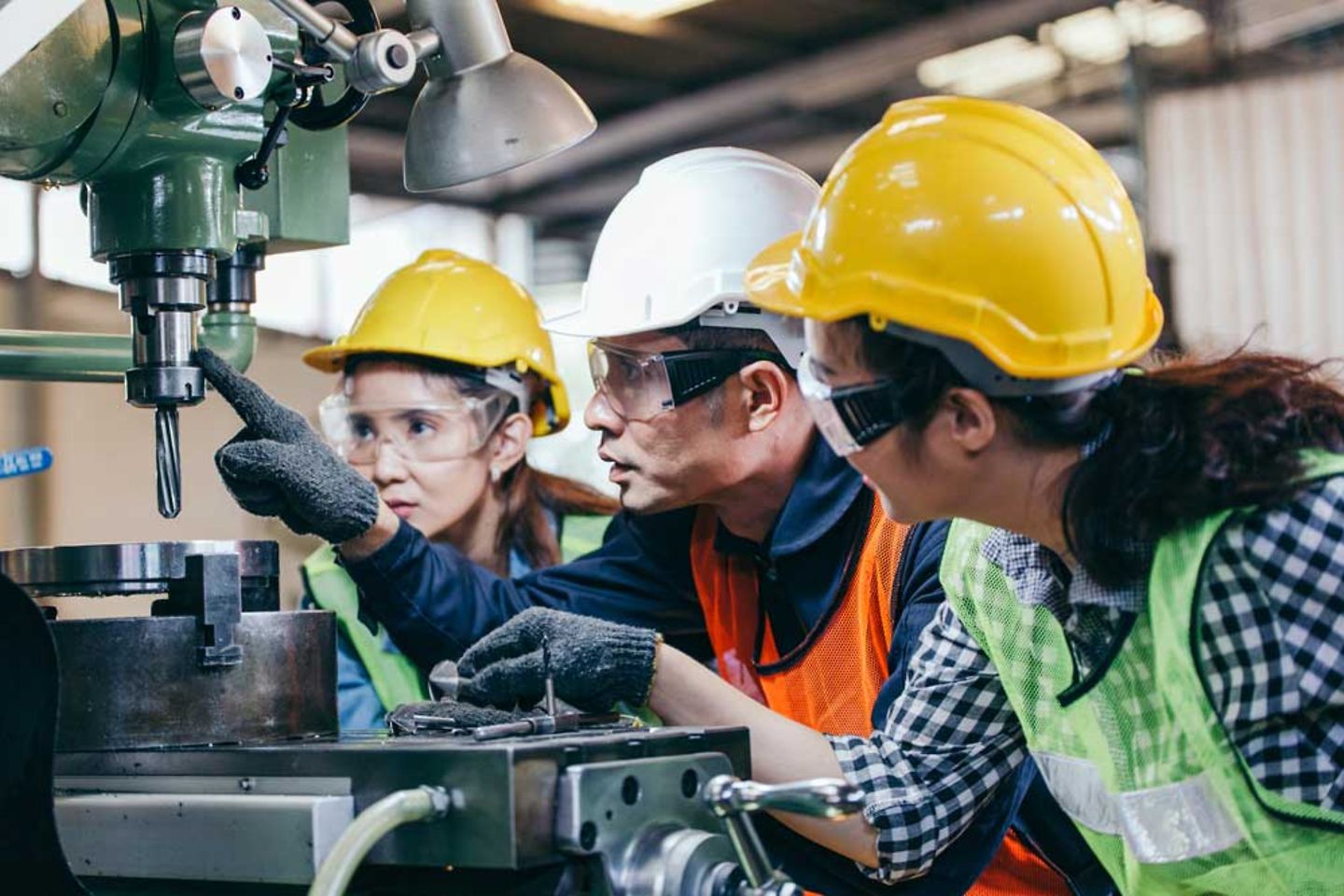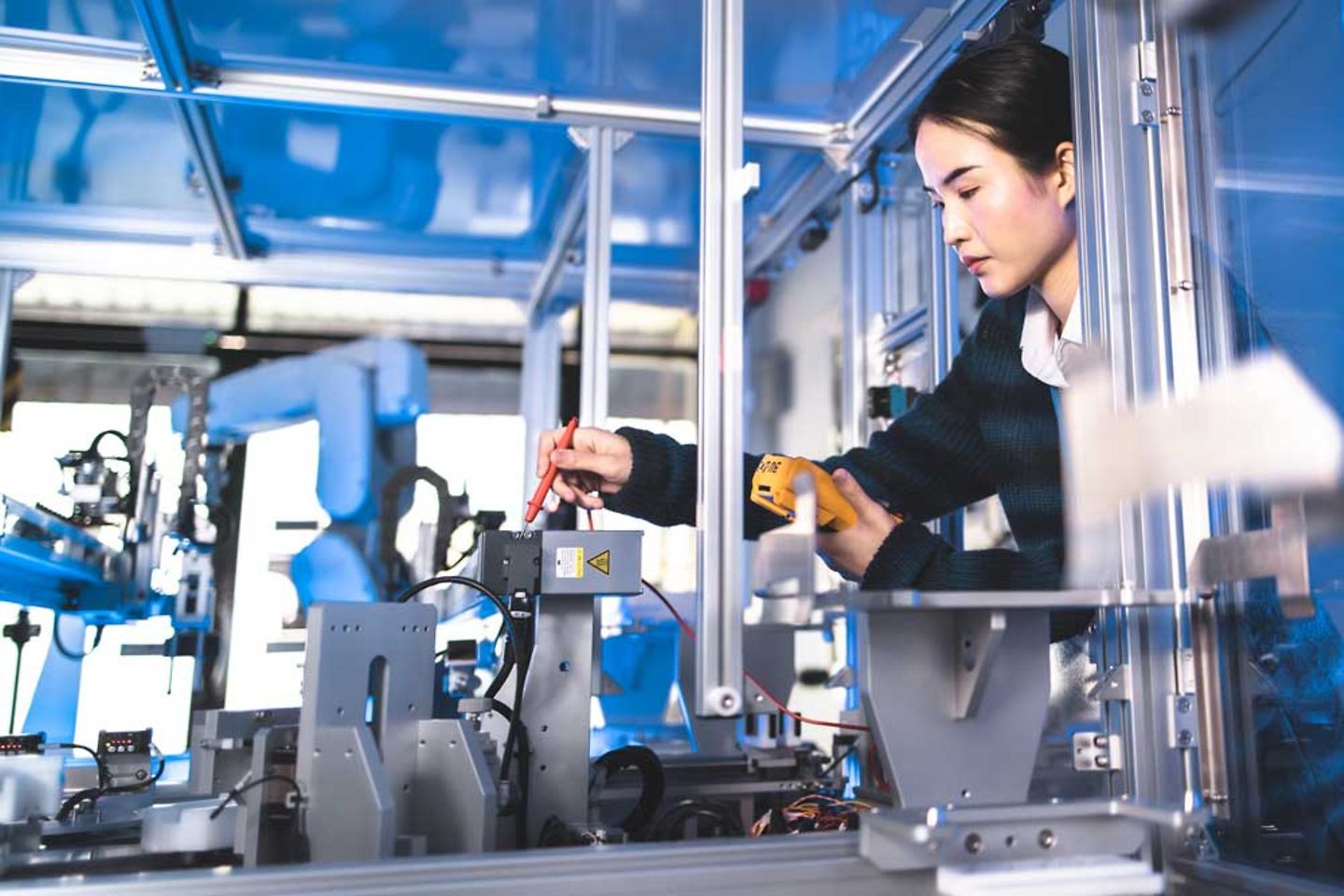
With the right digitalisation tools, SMEs can modernise their manufacturing processes and capture their competitive advantage without expending too much on resources and manpower.
We often think of large, global manufacturing corporations as a natural fit for industry 4.0 (i4.0) adoption, but small and medium enterprises (SMEs) stand to gain the most from adopting these cutting-edge technologies.
In Singapore, SMEs are defined as having an annual turnover of less than S$100 million and employing less than 200 workers. Their size makes it easier for them to evolve and adapt their business to new trends and advancements. And the fact that they also have less complex structures, legacy IT systems, and red tape compared to larger companies makes it easier for them to adopt new technologies.
But the most compelling reason for SMEs to take advantage of I4.0 technologies is that they’re able to give SMEs a competitive advantage in serving global customers with new demands, optimising the manufacturing process, and solving workforce issues by enhancing productivity.
Today’s ongoing technological evolution has not just affected businesses, but also impacted customer expectations.
For instance, consumers are now more environment- and health-conscious. They are becoming increasingly more conscientious about where they purchase their food and whether they are ethically and safely sourced. They also want to know whether they can trust claims made by businesses.
To respond to these evolving preferences, companies are under increasing pressure to differentiate themselves from the competition, whether in the form of more efficient processes, cost-effectiveness, or new and unique product features. I4.0 technologies allow businesses to collect, extract, and analyse big data to better understand customer needs and respond to those demands.

I4.0 technologies such as Internet of Things (IoT) systems, sensors, and predictive artificial intelligence (AI) can help by improving traceability, monitoring, and control of food quality, as well as reducing loss and waste. Not only does this help businesses get a clear view of their operations, efficiencies, and bottlenecks, but it can also be information passed on to consumers as they demand transparency with their food products. Businesses that can take advantage of these are better poised to gain market share and improve market reach.
A rise in productivity is one of the main drivers for I4.0 adoption, particularly for SMEs that tend to employ fewer people compared to their corporate counterparts.
A study by management consulting firm Raymond Chabot Grant Thornton (RCGT) surveyed 300 managers of companies with 10 to 499 employees and found that manufacturers with fewer than 20 employees and less access to funds prioritised technologies that directly impacted productivity, quality, and safety of manufacturing processes.

The lesson is clear for SMEs: due to their limited funds and resources, SMEs must learn to be strategic in their approach to digital transformation and desired productivity gains. With the appropriate digitalisation framework, SMEs can reap the benefits of I4.0 technologies right from the preparation stage.
In one instance, an SME was able to increase production line capacity from five structures per week to six—a 20% increase—simply by diagramming the production line value chain, identifying major bottlenecks, and executing lean interventions in preparation for implementing I4.0.
I4.0 will affect the work organisation for manufacturers, as it will evolve the relationship between humans and machines. While it might seem like the rise of automation will threaten human jobs, organisations can design human-machine relationships positively—or, in other words, in a human-centred way.
The aforementioned RCGT study found that one of the key challenges for SMEs in manufacturing is labour recruiting and retention. With fewer hands on deck, it’s vital that SME employees focus on core tasks rather than put out fires or do manual labour. While SMEs’ smaller size makes them more agile, that can also mean their staff gets bogged down doing non-essential tasks.

In an ideal scenario, the factory floor could be designed such that humans and machines can work side-by-side, with the strengths of each complementing the other. Machines, like robots and cobots, will take on manual, repetitive, and potentially dangerous tasks, while humans will handle complex tasks, react creatively to unforeseen events, or take on more strategic roles. This would open up new, high-level jobs for humans and promote opportunities for upskilling.

Naturally, I4.0 adoption won’t happen overnight. It will require significant planning and investment into tools, business models, and human capital (i.e., tech-savvy personnel and specialists) to navigate the changes. Perhaps the most significant barrier to adoption is the initial cost, time, and resource investment necessary to get the I4.0 ball rolling.
A 2021 study found four main barriers to I4.0 adoption: technical barriers (e.g., lack of ICT infrastructures and skilled workers); organisational barriers (e.g., lack of financial resources); technological barriers (e.g., lack of access to advanced technologies); and legal barriers (e.g., privacy concerns, lack of government support).
However, the study also found that while SMEs—particularly those in developing countries—face more barriers, they also perceive more opportunities related to I4.0, particularly in operations management.
As the world continues to evolve, and businesses gradually adopt I4.0 technologies,SMEs that do not pursue their competitive advantage stand to lose.
While challenges remain, research has shown that with the right approach, the road to digitalisation does not have to be immediately resource-intensive and can reap immediate benefits.
SMEs should focus on modest but scalable digitalisation efforts that deliver immediate positive impacts. Even small first steps, given a tangible improvement in operations, can start a virtuous cycle of validation and adoption that can lead to bigger benefits down the road.
According to the 2020 APAC SMB Digital Maturity Study by Cisco, SMEs enjoy an average of 50% increase in revenue and productivity when they move up to the advanced “digital challenger” stage of the survey’s framework for digital maturity. The SMEs that start small, if only to gain a head start, will only get there ahead of competitors that hesitate to digitalise at all.
Discover how our guidance can help you make the right I4.0 digital transformation decisions; get in touch with us today.